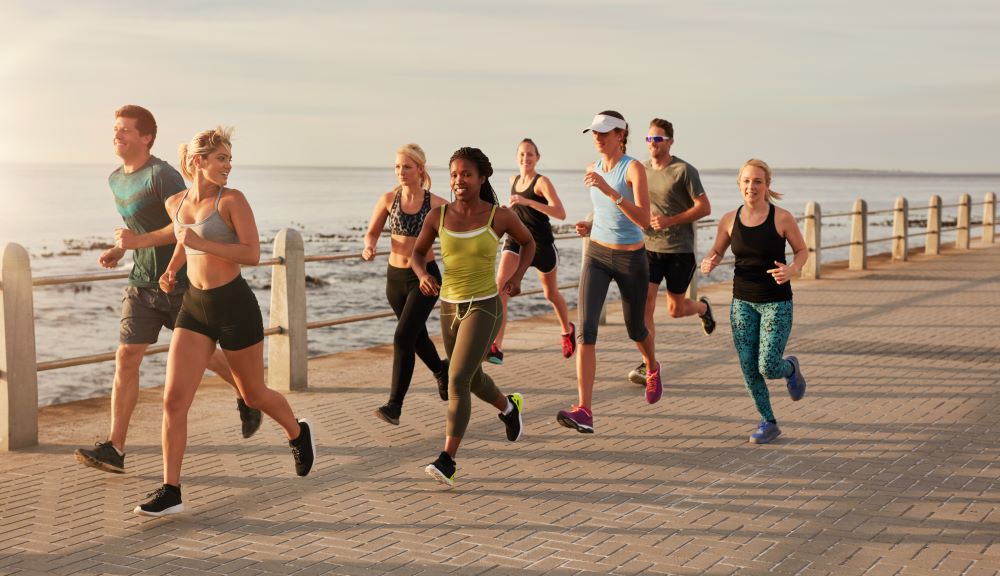Running is more than just a form of exercise; it is a *transformative journey* that can lead to exceptional weight loss results. For many, the path to fitness freedom begins with lacing up a pair of running shoes and hitting the trail. The appeal of running lies in its simplicity and effectiveness. Whether you are a beginner or an experienced runner, integrating running into your weight loss plan can yield remarkable benefits.
One of the most compelling aspects of running is its ability to burn calories efficiently. When you run, you engage multiple muscle groups, which aids in accelerating your metabolism. This heightened metabolic rate continues even after your run, contributing to greater overall calorie expenditure.
Moreover, running requires minimal equipment, making it an accessible option for anyone. All you need is a good pair of running shoes and the willingness to take that first step. The sense of accomplishment that accompanies completing a run can also boost your mental health, reducing stress and fostering a positive outlook.
In this article, we will delve into *inspiring success stories* of individuals who have transformed their lives through running. These narratives not only highlight the physical benefits but also the emotional and psychological triumphs achieved through perseverance and dedication.
Are you ready to embark on your own running journey? Visit our website to learn more and get started today! Click here.
Success Stories of Weight Loss Through Running

The power of running in achieving weight loss goals is best exemplified through real-life success stories. These stories serve as *beacons of hope* and *motivation* for those embarking on their own fitness journeys. Let’s explore a few remarkable tales of transformation through running.
Sarah’s Journey: Sarah, a 35-year-old mother of two, struggled with weight gain after her pregnancies. Feeling overwhelmed and exhausted, she decided to take up running. Starting with short, manageable jogs around her neighborhood, Sarah gradually increased her distance and speed. Within a year, she had lost over 50 pounds. Today, Sarah not only enjoys a healthier weight but also revels in the joy of running marathons and inspiring her children to stay active.
John’s Transformation: John, a 45-year-old office worker, had been battling obesity for most of his adult life. After a health scare, he knew it was time for a change. John started running with a local group, and the camaraderie kept him motivated. Over two years, he shed an impressive 80 pounds. John’s transformation has been more than physical; he now has a new lease on life and has even taken up coaching to help others achieve their goals.
Emma’s Renewal: Emma, in her early 30s, found herself trapped in a cycle of unhealthy eating and sedentary habits. She began running as a way to escape her routine and clear her mind. What started as a mental health break turned into a full-fledged passion. Emma lost 60 pounds and discovered a love for trail running, which allowed her to explore nature while staying fit.
These stories highlight the *incredible potential* of running as a tool for weight loss. They remind us that with dedication, perseverance, and a supportive community, anyone can achieve their fitness goals and transform their lives.
Key Benefits of Running for Weight Loss

Running is one of the most effective and accessible forms of exercise for weight loss. It offers a multitude of benefits that extend beyond just shedding pounds. Here are some key advantages of incorporating running into your weight loss routine:
High Calorie Burn: Running is a high-intensity cardiovascular activity that burns a significant number of calories in a relatively short amount of time. This makes it an efficient way to create a calorie deficit, which is essential for weight loss.
Improved Metabolic Rate: Regular running boosts your metabolism, not just during the activity but also after your workout. This phenomenon, known as the afterburn effect, means you continue to burn calories even when you’re at rest.
Enhanced Cardiovascular Health: Running strengthens your heart and improves circulation, reducing the risk of heart disease. A healthier cardiovascular system helps your body function more efficiently, aiding in weight management.
Muscle Toning: While running primarily targets the lower body muscles, it also engages your core and upper body to a lesser extent. This helps in toning and sculpting your muscles, leading to a leaner appearance.
Mental Health Benefits: Running releases endorphins, the body’s natural feel-good hormones, which can help reduce stress and anxiety. A positive mental state is crucial for maintaining motivation and consistency in your weight loss journey.
Accessibility and Convenience: One of the greatest benefits of running is that it requires minimal equipment. A good pair of running shoes and a safe route are all you need to get started. This makes it easy to fit into a busy lifestyle.
Incorporating running into your weight loss plan can provide these incredible benefits and more. It’s a versatile and powerful tool that not only helps you lose weight but also improves your overall health and well-being.
Tips for Starting Your Running Journey

Embarking on a running journey for weight loss can be both exciting and daunting. However, with the right approach, you can set yourself up for success and enjoy the process. Here are some essential tips to help you get started:
Set Realistic Goals: Begin by setting achievable goals that reflect your current fitness level. This could be as simple as running for 10 minutes without stopping or completing a certain distance. Gradually increase your goals as you improve.
Invest in Quality Gear: Proper running shoes are crucial to prevent injuries and ensure comfort. Visit a specialty store to get fitted for shoes that match your gait and foot type. Comfortable, moisture-wicking clothing can also enhance your running experience.
Start Slow: If you’re new to running, it’s important to start with a combination of walking and running. This method, known as interval training, helps build endurance and reduces the risk of injury. For example, alternate between 1 minute of running and 2 minutes of walking.
Warm Up and Cool Down: Always begin your runs with a warm-up to prepare your muscles and joints. This can include dynamic stretches or a brisk walk. Similarly, cool down with light stretching to aid in muscle recovery and prevent stiffness.
Stay Hydrated: Proper hydration is essential for optimal performance and recovery. Drink water before, during, and after your runs. On longer runs, consider carrying a water bottle or planning a route with water stops.
Listen to Your Body: Pay attention to how your body feels during and after runs. If you experience pain or discomfort, it may be a sign to rest or seek professional advice. Overtraining can lead to injuries, so it’s important to balance effort with recovery.
Join a Community: Running with others can provide motivation, support, and accountability. Consider joining a local running club or online community where you can share experiences and tips.
By following these tips, you’ll be well on your way to a successful and enjoyable running journey. Remember, the key is consistency and patience. Celebrate your progress and stay committed to your goals.
Overcoming Challenges in Running for Weight Loss
Starting a running routine for weight loss is a commendable goal, but it comes with its own set of challenges. Being prepared to face and overcome these obstacles can make a significant difference in your journey. Here are some common challenges and tips on how to tackle them:
Initial Discomfort: It’s normal to feel discomfort when you start running, especially if you’re new to the activity. This can include muscle soreness, shortness of breath, and fatigue. To mitigate these, ensure you are starting slow and gradually increasing your intensity. Incorporate rest days to allow your body to recover.
Lack of Motivation: Maintaining motivation can be tough, especially when results are not immediate. Set short-term goals and celebrate small victories to keep your spirits high. Tracking your progress through a running app or journal can also provide a visual reminder of your achievements.
Time Management: Finding time to run can be challenging with a busy schedule. Plan your runs in advance and treat them as important appointments. Opt for early morning or late evening runs if your day is hectic. Remember, even a short run is better than no run at all.
Weather Conditions: Unfavorable weather can disrupt your running routine. On hot days, run in the early morning or late evening to avoid the heat. In cold weather, dress in layers and ensure you’re properly warmed up. If the weather is too severe, consider indoor alternatives like a treadmill.
Plateaus: Weight loss plateaus are common and can be frustrating. When you hit a plateau, mix up your routine by trying different routes, incorporating strength training, or increasing your run intensity. This can help to keep your body challenged and progressing.
Injuries: Injuries are a major setback for many runners. Pay attention to any persistent pain and seek medical advice if necessary. Prevent injuries by wearing proper footwear, warming up before runs, and not pushing yourself too hard too soon.
By addressing these challenges head-on, you can maintain your momentum and continue making strides in your weight loss journey. Remember, every runner faces obstacles, but overcoming them is what makes the journey rewarding.
Maintaining Weight Loss with Running

Achieving your weight loss goals through running is a remarkable accomplishment, but maintaining that weight loss can be just as challenging. To help you stay on track, consider these strategies:
Consistency is Key: One of the most important factors in maintaining weight loss is staying consistent with your running routine. Aim for regular runs, whether it’s daily, every other day, or a few times a week. Find a schedule that works for you and stick to it.
Set New Goals: After reaching your initial weight loss goal, it’s crucial to set new targets to keep yourself motivated. These can be related to distance, speed, or even participating in a local race. New goals will provide you with something to strive for and help you maintain your fitness levels.
Incorporate Variety: To avoid burnout and keep your routine engaging, mix up your running routes and include different types of runs, such as interval training, hill sprints, or long-distance runs. This variety not only makes running more enjoyable but also helps in burning more calories and building different muscle groups.
Balanced Nutrition: Maintaining weight loss isn’t just about running; it also involves a balanced diet. Focus on consuming nutrient-dense foods that fuel your runs and promote overall health. Avoid falling into the trap of overeating, thinking you can burn off the extra calories through running alone.
Stay Connected to the Community: Being part of a running community can provide support, encouragement, and accountability. Join local running groups or online forums where you can share your experiences, seek advice, and celebrate milestones together.
Listen to Your Body: Pay attention to your body’s signals. Rest when needed and don’t ignore any signs of injury or fatigue. Adequate rest and recovery are essential for long-term sustainability and injury prevention.
Maintaining your weight loss through running is a marathon, not a sprint. By staying consistent, setting new goals, and incorporating variety into your routine, you can continue to enjoy the benefits of your hard-earned progress. Visit our website to learn more and get started today! Click here.


